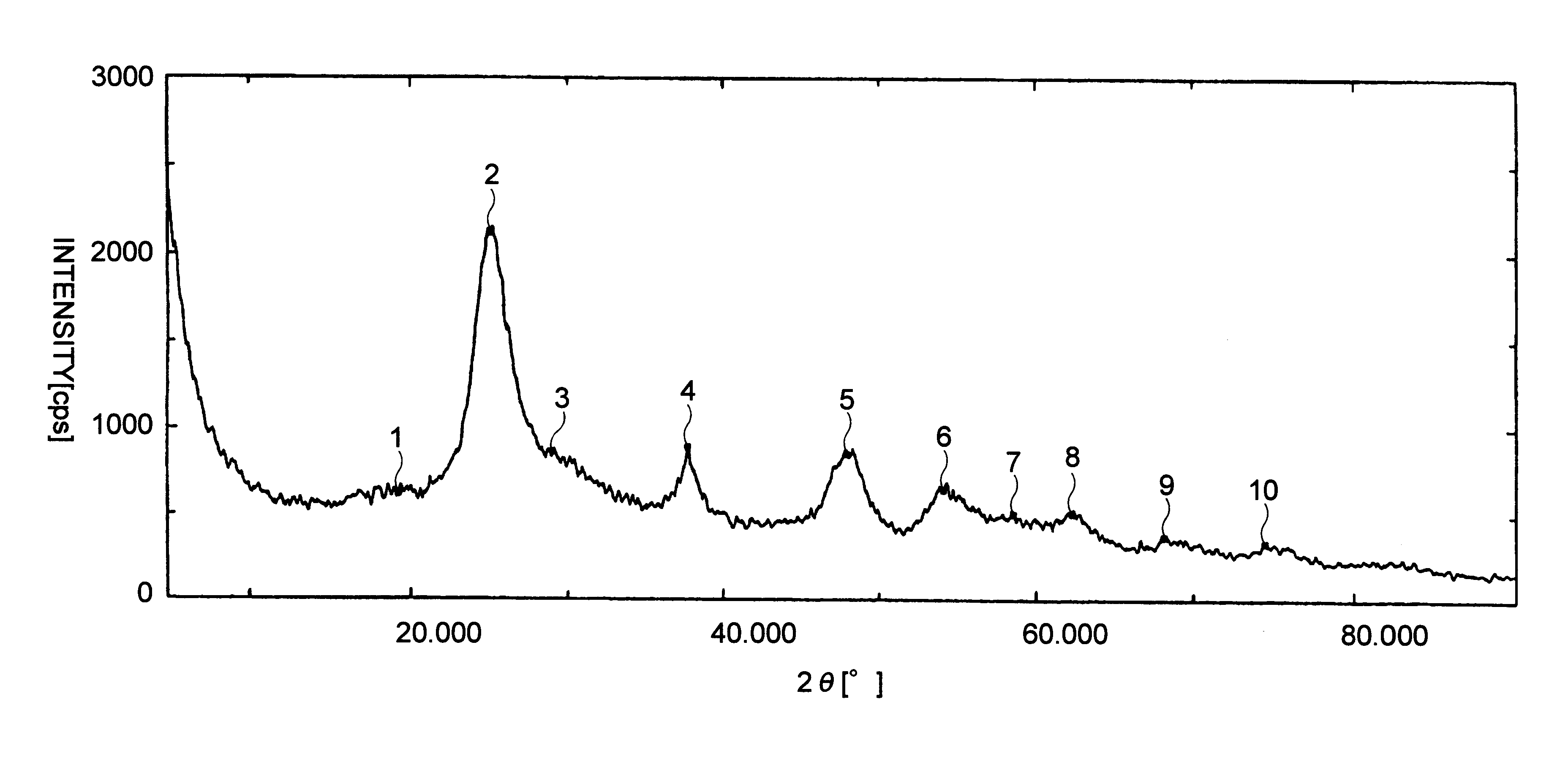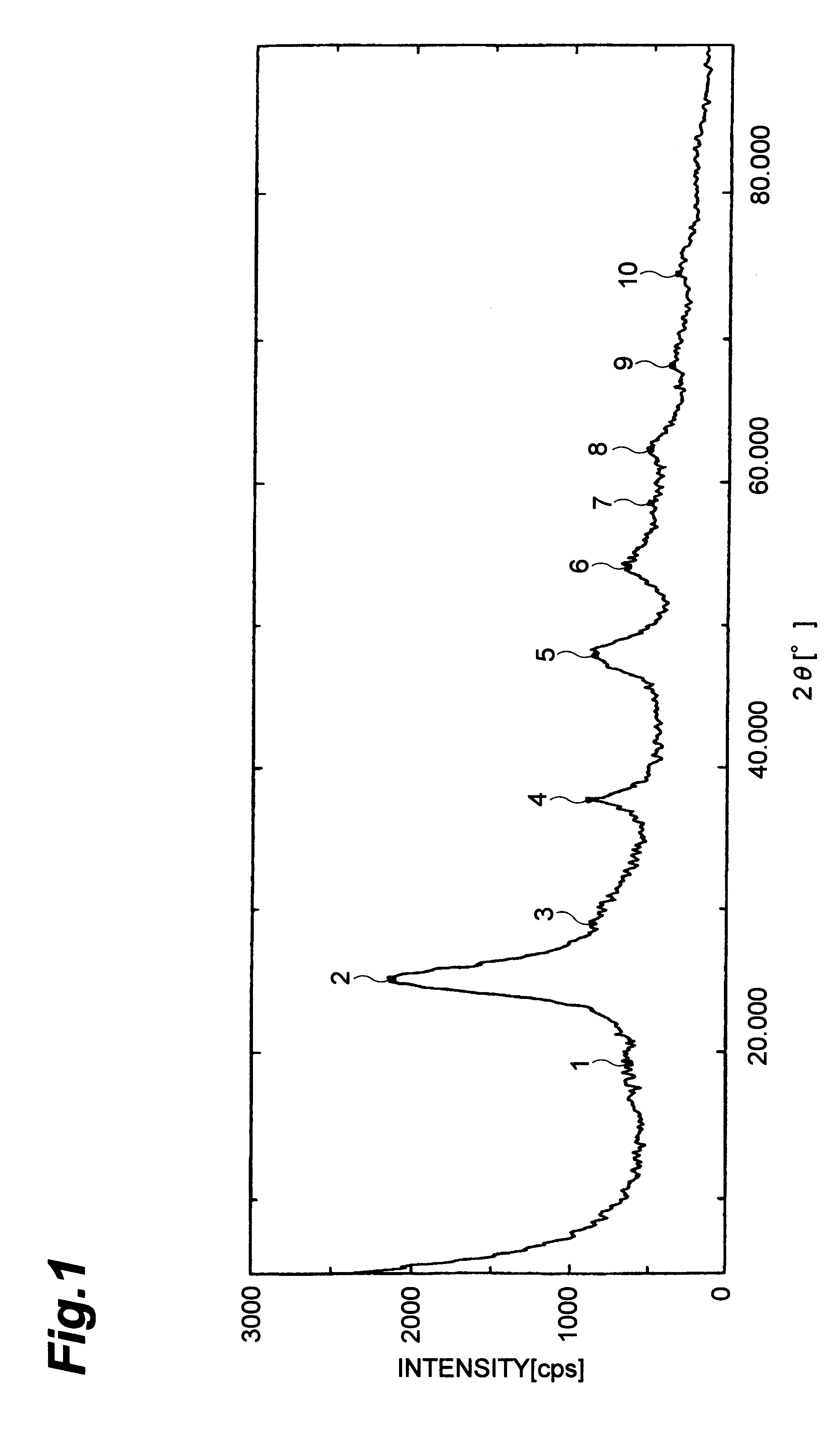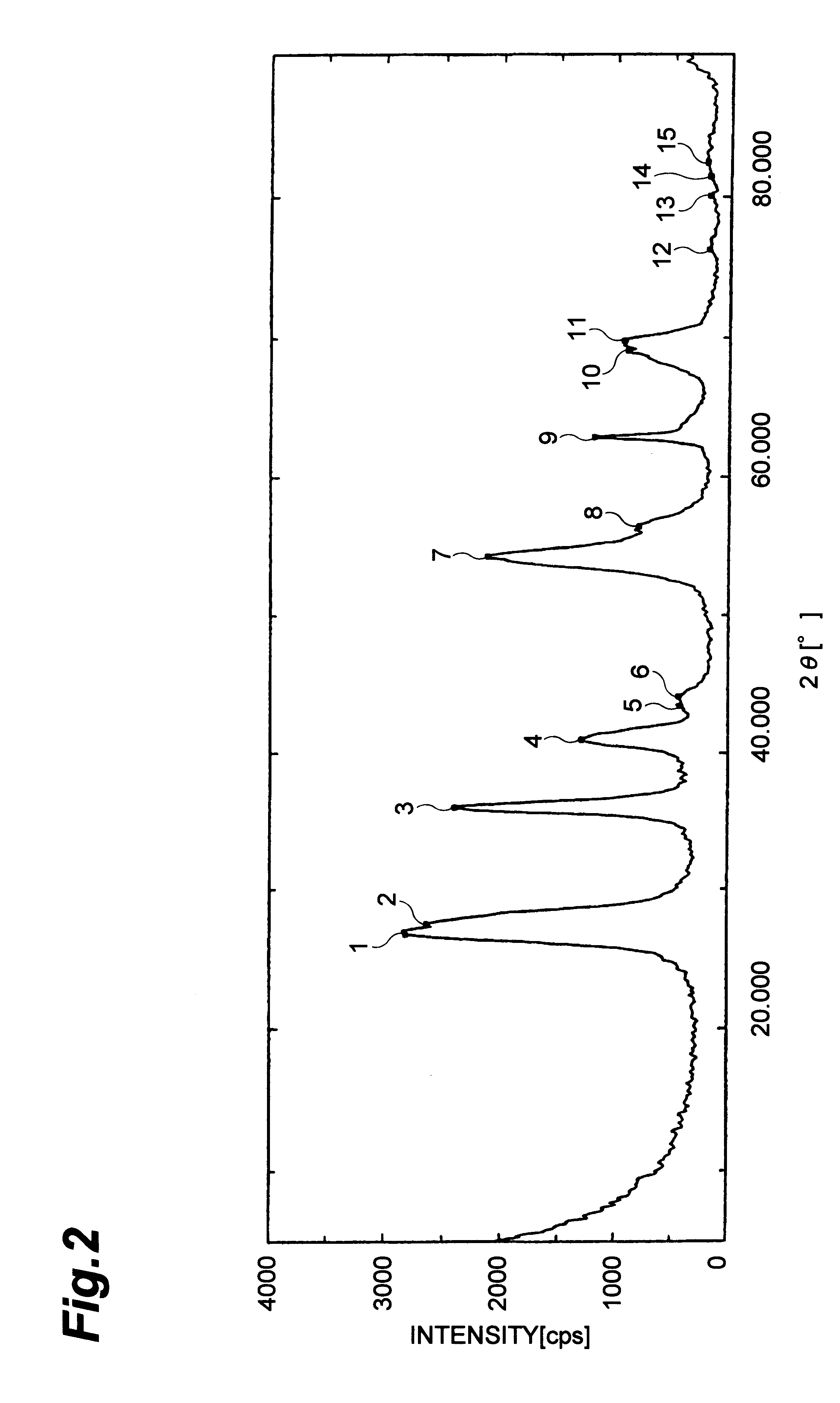Method for producing fine particles of metal oxide
a technology of metal oxide and fine particles, which is applied in the direction of tin oxides, physical/chemical process catalysts, arsenic compounds, etc., can solve the problems of difficult control of particle size, difficult operation after producing fine particles such as centrifugation and filtration, and wide particle size distribution of particles produced by these methods
- Summary
- Abstract
- Description
- Claims
- Application Information
AI Technical Summary
Problems solved by technology
Method used
Image
Examples
example 2
Three grams of titanium tetrachloride and 2 ml of water were added into a 100 ml-volume flask, and then 40 ml of ethanol was added to them, and the flask was equipped with reflux condenser followed by heat-refluxing for 1 hour to hydrolyze the titanium tetrachloride. After washing, the resultant sol was treated by the same as set forth in Example 1 to obtain fine particles (provided that washing was done only with water). An X-ray diffraction analysis of the resultant fine particles showed that it was anatase type crystalline titanium oxide. An analysis by transmission electron microscope showed that the particles had 2-6 nm particle size and narrow particle size distribution.
example 3
Three grams of titanium tetrachloride and 2 ml of water were added into a 100 ml-volume flask, and then 40 ml of toluene was added to them, and the flask was equipped with reflux condenser followed by heating at 100.degree. C. for 1 hour to hydrolyze the titanium tetrachloride. The procedures as set forth in Example 1 were repeated to obtain fine particles. An X-ray diffraction analysis of the resultant fine particles showed that it was rutile type crystalline titanium oxide. The X-ray diffraction is shown as FIG. 2. An analysis by transmission electron microscope showed that the particles had 2-7 nm particle size and narrow particle size distribution.
example 4
Titanium tetrachloride 3.7 g was dissolved in 40 ml of dimethylformamide at about 10.degree. C. before the resultant solution was transferred into a 100 ml-volume flask. Then 0.7 ml of water was added dropwise so as not to raise the temperature followed by heating them at 100.degree. C. for 1 hour to hydrolyze the titanium tetrachloride. The procedures as set forth in Example 1 was repeated to obtain fine particles. An X-ray diffraction analysis of the resultant fine particles showed that it was anatase type crystalline titanium oxide. An analysis by transmission electron microscope showed that the particles had 2-4 nm particle size and narrow particle size distribution.
PUM
| Property | Measurement | Unit |
|---|---|---|
| particle size | aaaaa | aaaaa |
| mean particle size | aaaaa | aaaaa |
| particle size distribution | aaaaa | aaaaa |
Abstract
Description
Claims
Application Information
 Login to View More
Login to View More - R&D
- Intellectual Property
- Life Sciences
- Materials
- Tech Scout
- Unparalleled Data Quality
- Higher Quality Content
- 60% Fewer Hallucinations
Browse by: Latest US Patents, China's latest patents, Technical Efficacy Thesaurus, Application Domain, Technology Topic, Popular Technical Reports.
© 2025 PatSnap. All rights reserved.Legal|Privacy policy|Modern Slavery Act Transparency Statement|Sitemap|About US| Contact US: help@patsnap.com



